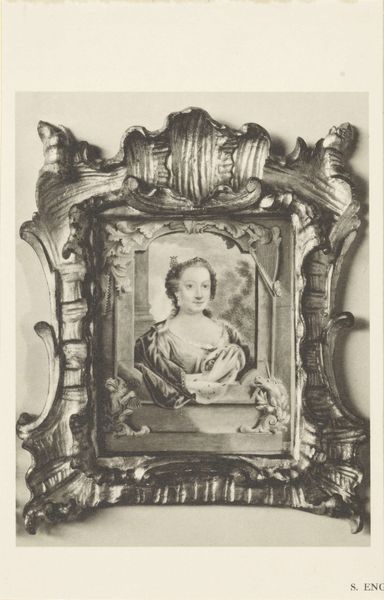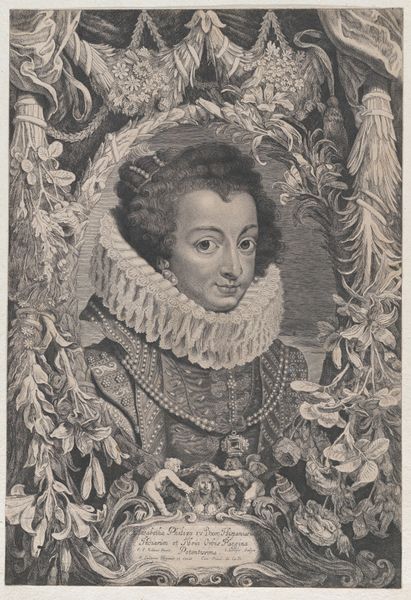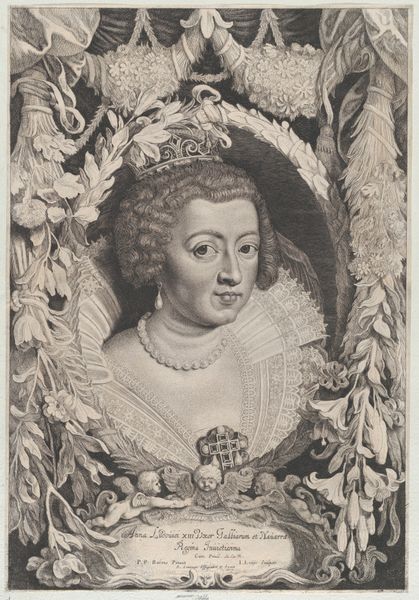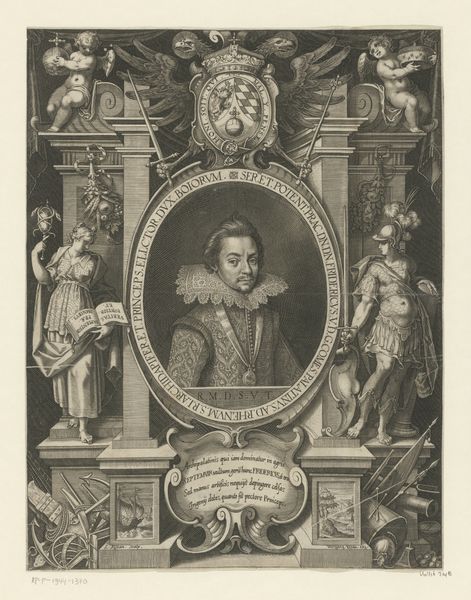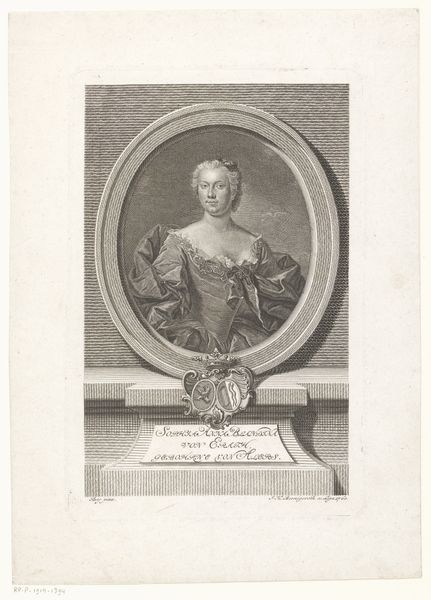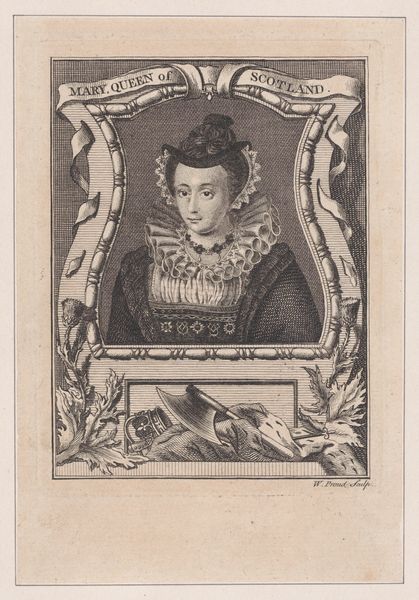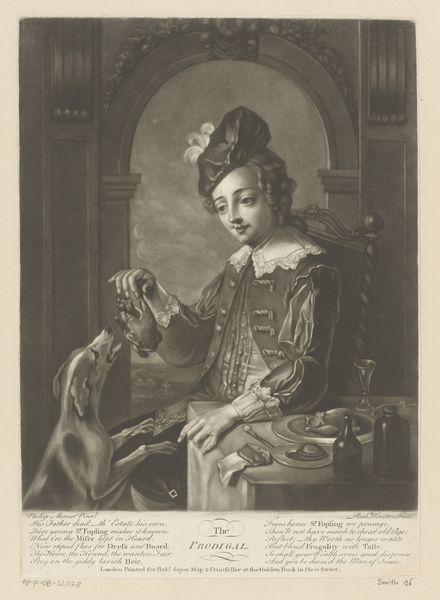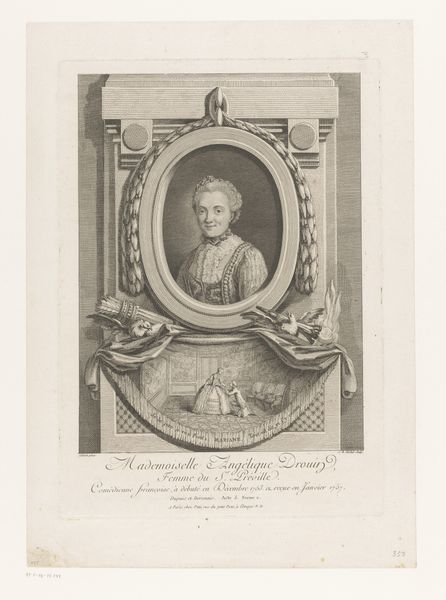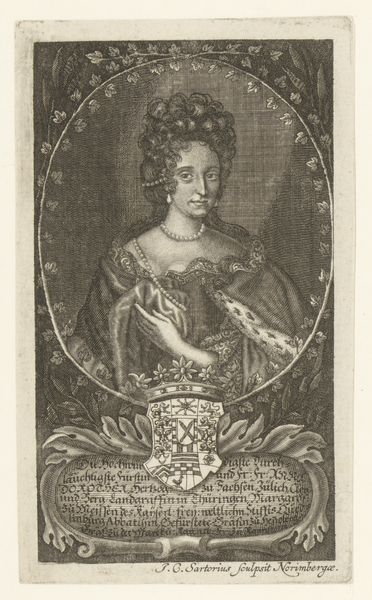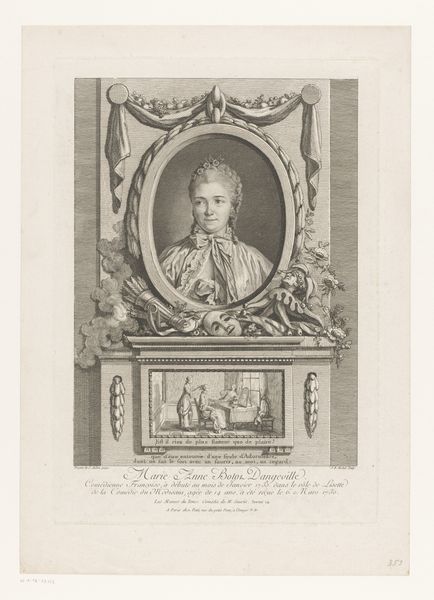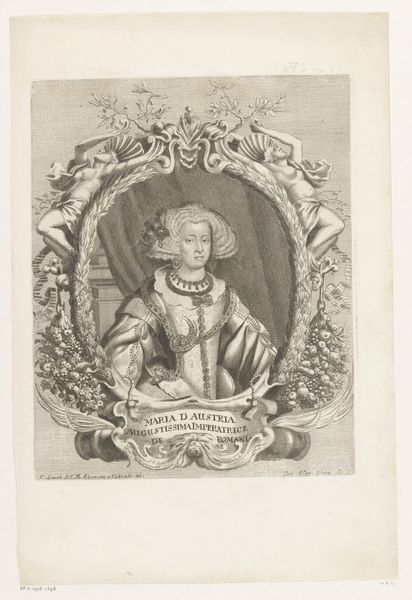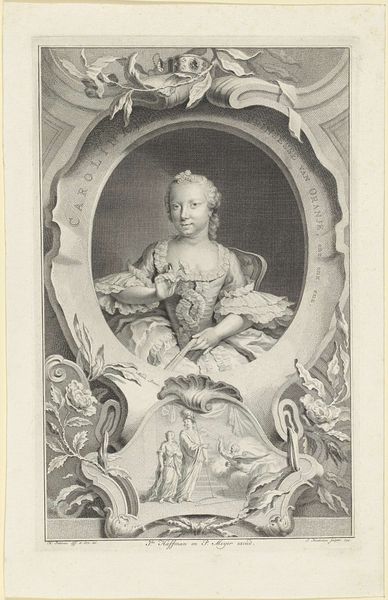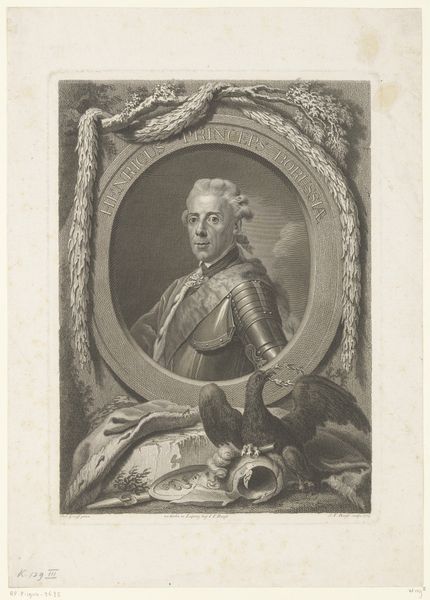
Portrait of Albert VII, Archduke of Austria 1645 - 1655
0:00
0:00
drawing, print, etching, intaglio, engraving
#
portrait
#
drawing
#
baroque
# print
#
etching
#
intaglio
#
history-painting
#
engraving
Dimensions: Sheet (Trimmed): 16 3/8 in. × 11 in. (41.6 × 28 cm)
Copyright: Public Domain
Curator: This intaglio print captures Archduke Albert VII of Austria, likely created between 1645 and 1655 by Jonas Suyderhoef. It's currently held at the Metropolitan Museum of Art. What’s your initial response? Editor: It's an ornate portrayal! The crispness of the lines contrasts strikingly with the rather severe expression of the Archduke. The formal arrangement of line work does give a strong impression of structure, although somewhat intimidating, no? Curator: Structure indeed! Consider the meticulous etching, the lines building form, defining volume. Look at the geometric perfection in the ruff’s concentric circles or the almost mathematical precision in rendering the draped fabrics above the Archduke's head. What does that repetitive form evoke for you? Editor: The ruff encircling his head evokes an almost halo-like effect, or a wheel… perhaps a crown of thorns of power, or more abstractly the constraints put on someone of noble station. Those cherubs near the bottom holding courtly accoutrements also draw my eye…it speaks volumes about the expected performance of masculinity during this period. What power games the Archduke played and the role these might've played in those dramas! Curator: Fascinating. Consider, also, how the image insists on flatness, despite its attempts at volume. Note how the use of line flattens rather than deepens the planes in certain areas—look at the drapery or his cheek, where line stands in opposition to shadow. It’s an almost modernist engagement with flatness embedded in the Baroque! Editor: Ah, a negotiation between presence and performance—between the man and his ordained function. One observes it acutely in the tension between Albert's gaze and the ephemeral decoration that confines his portrait. To be a ruler during a period of social upheavals as the plague would call for a particular ability to communicate through gestures and expression that projected the fortitude of their realm. The garlands suggest life, fertility. An idealized portrait for a monarch perhaps wanting to express his leadership capabilities. Curator: Yes, these portraits are, in essence, studies of both the man and the machinations that must swirl within him to execute state-craft. The artist teases out the subtleties that reveal so much more than his social obligations would let on. Editor: Well observed. A fascinating look at power through carefully placed visual cues, embedded in those Baroque curls and etched lines. Curator: A stimulating reminder that an artwork is a sum total of the components—line, form, symbol—an exciting blend of design and content!
Comments
No comments
Be the first to comment and join the conversation on the ultimate creative platform.
